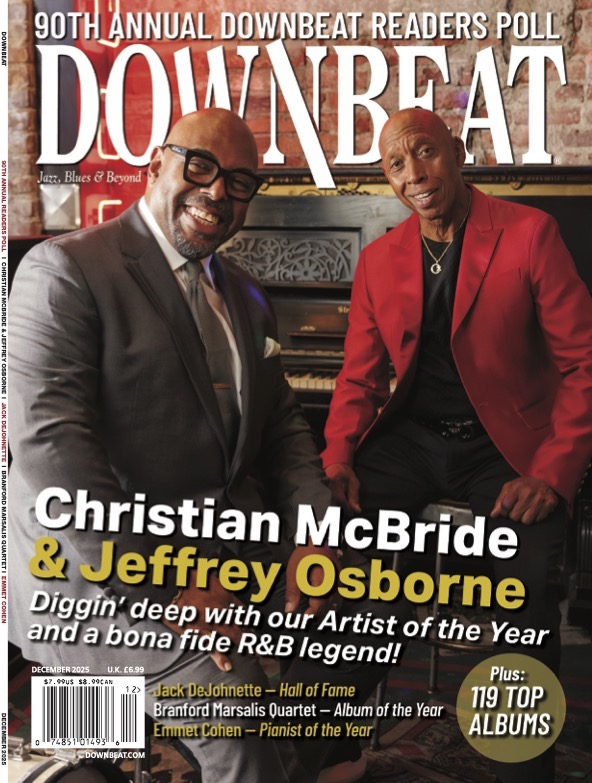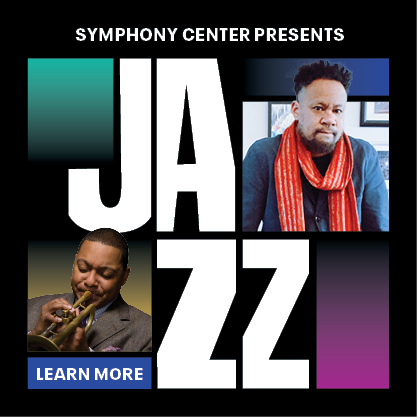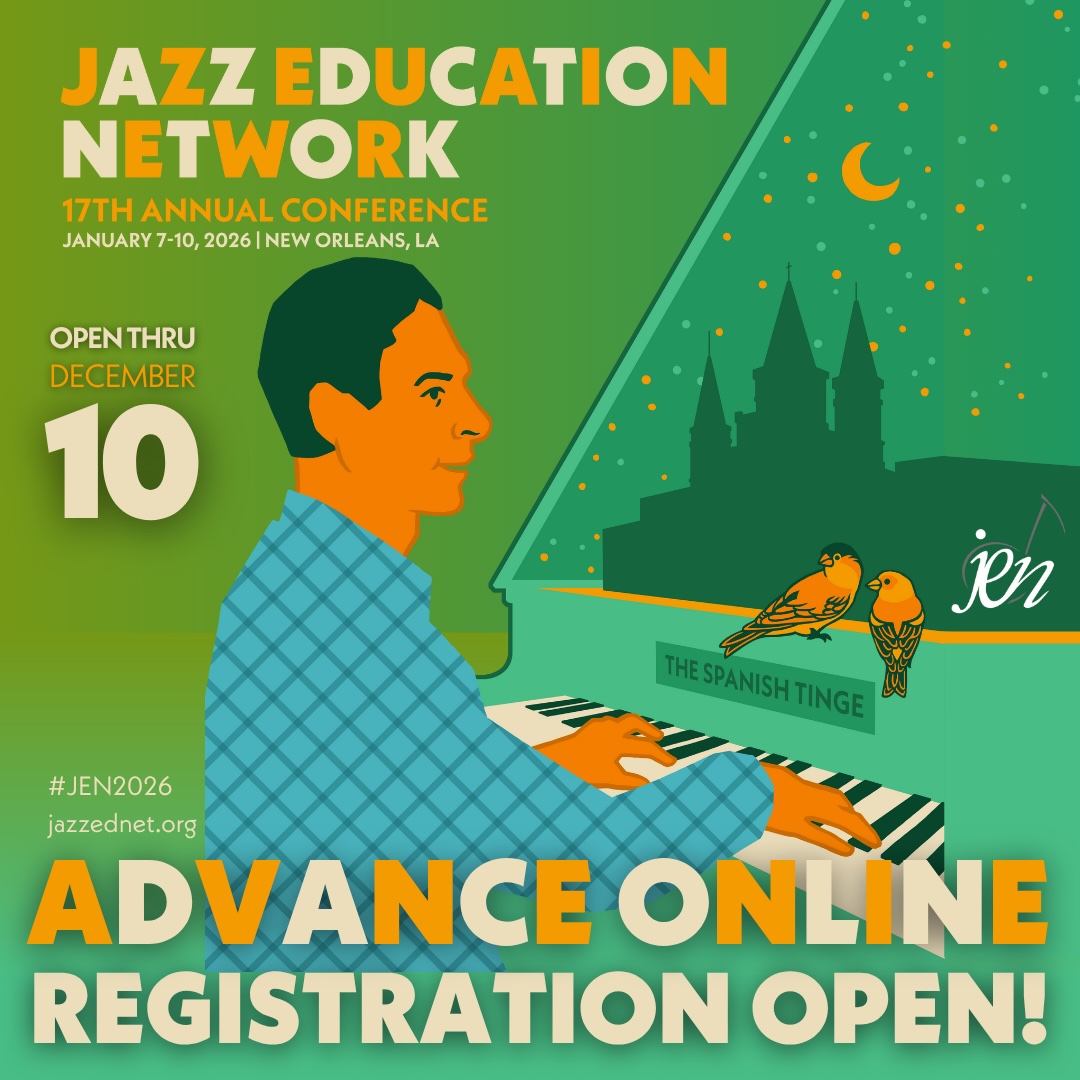Oct 28, 2025 10:47 AM
In Memoriam: Jack DeJohnette, 1942–2025
Jack DeJohnette, a bold and resourceful drummer and NEA Jazz Master who forged a unique vocabulary on the kit over his…
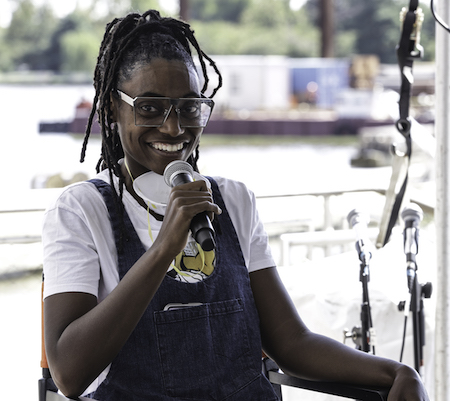
“I got that chill in my spine. So I’m guessing that’s Kenny Garrett,” Lakecia Benjamin said while listening to the alto saxophonist play John Coltrane’s “Dear Lord.”
(Photo: Jati Lindsay)Alto saxophonist Lakecia Benjamin continues her upward arc on the heels of her stunning 2020 release Pursuance: The Coltranes (Ropeadope), for which she assembled an all-star cast to plumb the music of Alice and John Coltrane. Results of that release included her copping the DownBeat Critics Poll Award for Rising Star–Alto Saxophonist and the Jazz Journalist Association’s Up and Coming Artist of the Year in their respective 2020 polls. This was Benjamin’s first Blindfold Test, administered live during the 17th annual DC Jazz Festival before an audience at The Wharf on the scenic banks of the Potomac River. Later that day she thrilled an energized audience with the music from Pursuance, artfully performed by her band of bassist Lonnie Plaxico, drummer E.J. Strickland and pianist Zaccai Curtis.
Kenny Kirkland
“Steepian Faith” (Kenny Kirkland, GRP, 1991) Kirkland, piano; Jeff “Tain” Watts, drums; Charnett Moffett, bass; Branford Marsalis, soprano saxophone.
My first impression is that it was swingin’, the bass player really stood out. Is it a piano player’s record? That’s what I figured. It was swingin’, had kind of that old-school Blue Note, Wayne Shorter vibe and even though that’s not what it was; this was newer. I couldn’t figure out who was playing the soprano. It reminded me of some of the records I was studying when I was in college. That drum feel … and then when you said Kenny Kirkland, it had a familiar feel to me.
Gary Bartz
“Dahomey Dance/Tunji” (Coltrane Rules: Tao Of A Music Warrior, OYO Recordings, 2011) Bartz, alto saxophone; James King, bass; Greg Bandy, drums; Barney McAll, piano.
Is this Coltrane? That’s a Trane piece, “Dahomey Dance.” My issue is that the recording is not the original Trane, but it sounded exactly like the Trane vibe, just like the original. I’m not sure if the person was trying to mimic Trane, or if that’s just who they are. I don’t know the record, but I knew it wasn’t Trane because I didn’t hear the little nuances that Trane had. He got the alto sounding almost like a tenor!
Melissa Aldana
“Liquiescence” (Second Cycle, Inner Circle Music, 2012) Aldana, tenor saxophone; Gordon Au, trumpet; Joseph Lepore, bass; Ross Pederson, drums.
No idea what this is. It felt like from the more modern era, definitely felt more contemporary. It seemed very polite, it had a warm sound to it. The CD breathed a lot, and I like the interaction with the other horn. It was very easy on the ears.
Donald Harrison Jr.
“Indian Blues” (Indian Blues, 1992, Candid) Harrison, alto saxophone; Cyrus Chestnut, piano; Carl Allen, drums.
I like that, I like the tambourine, I like that whole thing. I thought at first it was a contemporary, but it’s got a lot of blues in it so that kinda scaled it back. In this generation it’s not that common that you hear that type of approach, coming from a real rootsy type of place. But it’s definitely somebody who studied, and somebody from that spirit and that vein.
Camille Thurman
“Forward Motion” (Origins, Hot Tone Music, 2014) Thurman, tenor saxophone; Rudy Royston, drums; Corcoran Holt, bass.
I don’t know where you’re getting these cuts from. You gotta get some alto players! I won’t say this is in the same contemporary vein as Melissa’s record. It had that ’90s/2000s feel. I thought they explored a lot. I don’t want to say it was a free performance, but they definitely had that open feel, open to spontaneity and whatever happens. I don’t think it’s Mark Shim, but it had that kind of vibe — I don’t think it’s JD [Allen], either, but it had that kind of openness. Is it Walter Smith? [afterwards] That’s like a behind-the-scenes cut from her record, that’s not one they play on the radio.
Kenny Garrett
“Dear Lord” (Pursuance: The Music Of John Coltrane, Warner Bros., 1996) Garrett, alto saxophone; Pat Metheny, guitar; Rodney Whitaker, bass; Brian Blade, drums.
That’s “Dear Lord,” right? This one I’m pretty sure. I got that chill in my spine. So I’m guessing that’s Kenny Garrett. The changes are “Dear Lord,” I could hear that, so I thought maybe it was from that Trane record [Garrett] did. I call Kenny Garrett a preacher; there’s something about the vibrato that he uses. Even when he doesn’t play much, it just pierces right through you … the fluidity, almost like a deep, ancient, spiritual vibe to it. I could just feel it, even though I haven’t listened to that record in a long, long time. Kenny Garrett, I call him the King of the Alto.
Randy Weston
“African Sunrise” (The Spirits Of Our Ancestors, Verve, 1992) Weston, piano; Idrees Sulieman, trumpet; Benny Powell, trombone; TK Blue, alto saxophone, alto flute; Billy Harper, Dewey Redman, tenor saxophone; Alex Blake, Jamil Nasser, bass; Idris Muhammad, drums; Big Black, Azzedin Weston, percussion; Melba Liston, arrangement.
If it is who I think it is, they’re rooted in the culture, rooted in the blues. It’s got an African thing to it; there’s roots in that record. It’s the piano player’s record, right? I could feel that. That flute solo reminded me of a teacher I had, TK [Blue]. It’s Randy Weston. In his pieces, he has so many different movements within the song. It’s almost as if you’re at sea going to different neighborhoods, different places, different cultures. So that’s what made me think it was Randy Weston, but I haven’t heard too many composers that appreciate him enough.
Branford Marsalis
“The Mighty Sword” (Four MFs Playin’ Tunes, Marsalis Music, 2012) Marsalis, soprano saxophone; Joey Calderazzo, piano; Justin Faulkner, drums; Eric Revis, bass.
This is the first one that I felt like I didn’t know, but I should know. It had a little Latin thing in it, but it kept the swing. My feeling is that it’s a contemporary, but not super contemporary, just because they kept playing the melody throughout the swing; kinda had that Jeff “Tain” Watts thing to it. That definitely sounded like a 21st century recording. I liked it. DB
The “Blindfold Test” is a listening test that challenges the featured artist to discuss and identify the music and musicians who performed on selected recordings. The artist is then asked to rate each tune using a 5-star system. No information is given to the artist prior to the test.
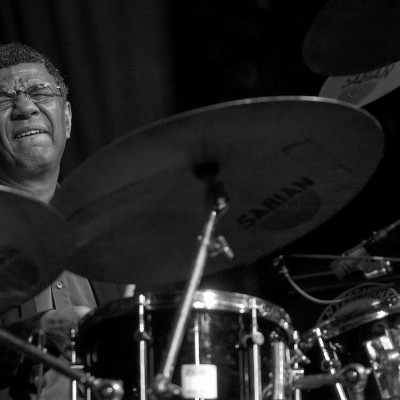
Jack DeJohnette boasted a musical resume that was as long as it was fearsome.
Oct 28, 2025 10:47 AM
Jack DeJohnette, a bold and resourceful drummer and NEA Jazz Master who forged a unique vocabulary on the kit over his…
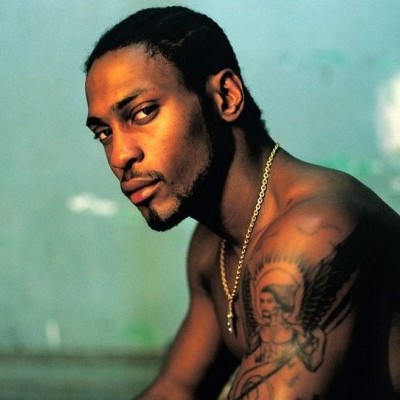
D’Angelo achieved commercial and critical success experimenting with a fusion of jazz, funk, soul, R&B and hip-hop.
Oct 14, 2025 1:47 PM
D’Angelo, a Grammy-winning R&B and neo-soul singer, guitarist and pianist who exerted a profound influence on 21st…
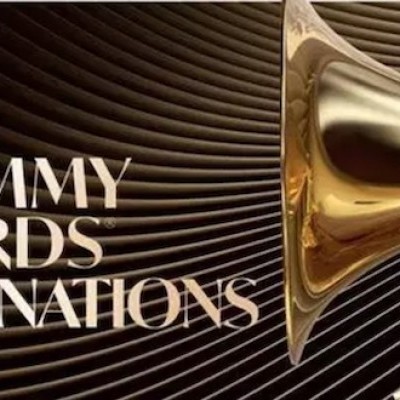
To see the complete list of nominations for the 2026 Grammy Awards, go to grammy.com.
Nov 11, 2025 12:35 PM
The nominations for the 2026 Grammy Awards are in, with plenty to smile about for the worlds of jazz, blues and beyond.…
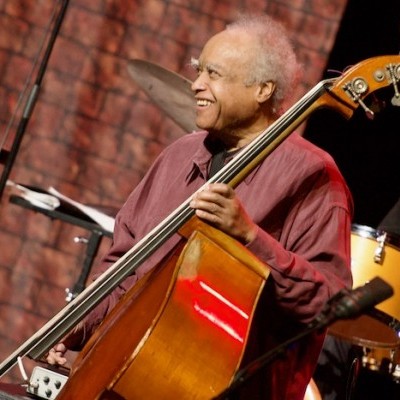
Drummond was cherished by generations of mainstream jazz listeners and bandleaders for his authoritative tonal presence, a defining quality of his style most apparent when he played his instrument unamplified.
Nov 4, 2025 11:39 AM
Ray Drummond, a first-call bassist who appeared on hundreds of albums as a sideman for some of the top names in jazz…
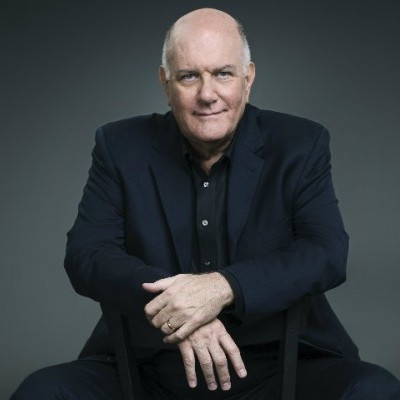
Jim McNeely’s singular body of work had a profound and lasting influence on many of today’s top jazz composers in the U.S. and in Europe.
Oct 7, 2025 3:40 PM
Pianist Jim McNeely, one of the most distinguished large ensemble jazz composers of his generation, died Sept. 26 at…

